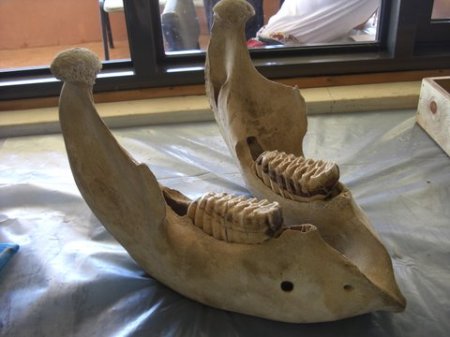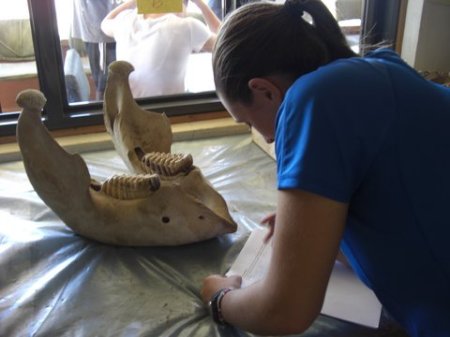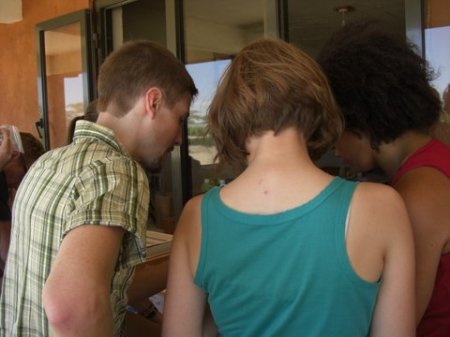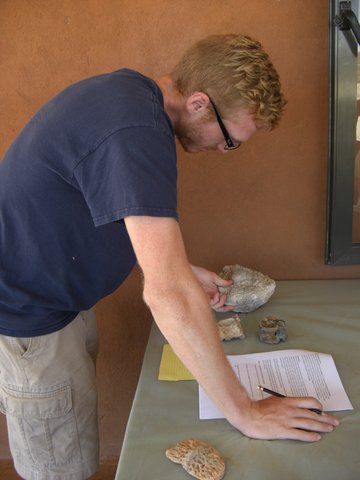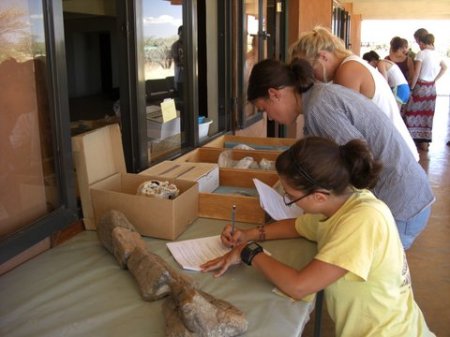Yesterday marked the beginning of the third Field School module, Vertebrate Paleontology, taught by Dr. Doug Boyer of Duke University. Students have already learned about the geologic time scale, biostratigraphy, and the history of evolutionary thought in lecture, and today they got some first-hand experience working with fossil material from a wide variety of taxa.
Dr. Boyer pulled plenty of material from TBI’s extensive collection, including both extinct and extant fauna, for students to observe, compare, and analyze.

